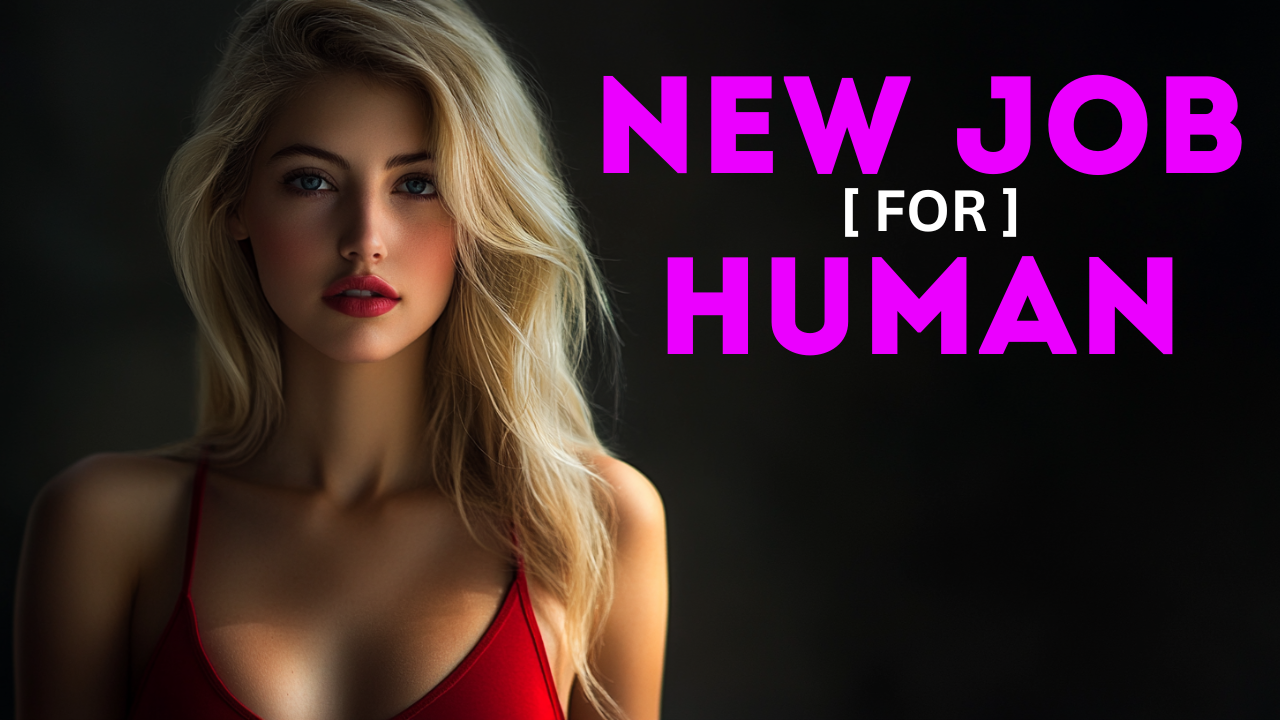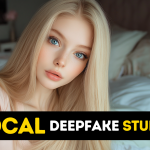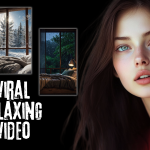Finally, we all have access to an AI image generator that can draw hands perfectly! This is the perfect time to kickstart your career as an AI photographer. No cameras, lenses, lights, or models are needed—just Flux AI and some basic photography knowledge. In this 12-minute video, we’ll cover detailed photography techniques, including a complete prompting guide and the results. Not only that, but we’ll also compare the results from the free Flux AI model with the pro AI model, so you don’t have to. Now, hit the like button, subscribe to this channel, and let’s get started!
We’re going to use Free FLUX 1 Schnell for this tutorial because it’s the fastest model for local development and personal use. And the best part? It’s free and open-source under an Apache 2.0 license. We’ll also check out FLUX 1 Pro, which is basically the best of FLUX 1. It’s got top-notch performance when it comes to generating images, following prompts, and producing high-quality pics with lots of detail and variety. To access Free FLUX Schnell online, you can use the Hugging Face link provided in the video description. Now, let’s try a simple example prompt. Click on “Advanced Settings.” For the image width and height, change it to the 16:9 aspect ratio. For the Inference Steps, set it to 28. What are Inference Steps? FLUX AI starts with a noisy image and then repeatedly cleans it up to match your prompt. The more inference steps you use, the more refined the image becomes, but it will also take longer to process. After everything is set, click the “Run” button to start generating your AI image. Now, let’s copy the prompt and use it in the Pro model. To try the Pro model for free, follow the FLUX AI link provided in the video description. You will need to log in with a GitHub account to use this website. Paste your prompt, and from the additional settings, you can adjust the image size and other parameters. Click “Run” to start generating your AI image.

Part 1: Photo Styles
Photo styles define the overall aesthetic and mood of a photograph. They can range from classic black and white to modern high fashion, each style creating a unique impact and feel.
- Black and White. Black and white photography emphasizes contrast, texture, and mood without the distraction of color. To create a black and white photograph with Flux AI Image Generator, make sure to include “black and white portrait” in your prompt. Here is an example of the black and white photo style in AI photography.
- Vintage. Vintage style mimics old photographic techniques, often with sepia tones, grain, and faded colors for a nostalgic effect. To create a vintage photograph with Flux AI Image Generator, make sure to include “vintage-style” in your prompt. Here is an example of the vintage photo style in AI photography.
- High Fashion. High fashion photography focuses on bold styling, dramatic lighting, and artistic poses to highlight clothing and accessories. To create a high fashion photograph with Flux AI Image Generator, make sure to include “high fashion portrait” in your prompt. Here is an example of the high fashion photo style in AI photography.
- Lifestyle. Lifestyle photography captures models in natural, everyday settings with a candid and relaxed feel. To create a lifestyle photograph with Flux AI Image Generator, make sure to include “lifestyle portrait or image” in your prompt. Here is an example of the lifestyle photo style in AI photography.
- Editorial. Editorial photography is used in magazines and features stylized, narrative-driven images that complement articles and stories. To create an editorial photograph with Flux AI Image Generator, make sure to include “editorial-style” in your prompt. Here is an example of the editorial photo style in AI photography.
- Minimalist. Minimalist photography focuses on simplicity, with a clean composition and limited elements to highlight the subject. To create a minimalist photograph with Flux AI Image Generator, make sure to include “minimalist portrait” in your prompt. Here is an example of the minimalist photo style in AI photography.
- Cinematic. Cinematic photography emulates the look of film or movies, with dramatic lighting, color grading, and storytelling elements. To create a cinematic photograph with Flux AI Image Generator, make sure to include “cinematic portrait” in your prompt. Here is an example of the cinematic photo style in AI photography.
Part 2: Lens Types
Lens types are crucial in photography as they determine how different aspects of a scene are captured. Each lens type has specific characteristics that affect the perspective, detail, and distortion of an image.
- Wide-Angle Lens. Wide-angle lenses capture a broader view, ideal for expansive scenes and adding depth. They often introduce distortion at the edges for a unique perspective. To create a wide-angle photograph with Flux AI Image Generator, make sure to include “wide-angle lens” in your prompt. Here is an example of the wide-angle lens photo style in AI photography.
- Telephoto Lens. Telephoto lenses magnify distant subjects and compress backgrounds, making the subject appear closer and more detailed. This lens is great for isolating the subject from the background. To create a telephoto photograph with Flux AI Image Generator, make sure to include “telephoto lens” in your prompt. Here is an example of the telephoto lens photo style in AI photography.
- Macro Lens. Macro lenses capture extreme close-ups with high detail, revealing textures and fine elements not visible with other lenses. To create a macro photograph with Flux AI Image Generator, make sure to include “macro lens” in your prompt. Here is an example of the macro lens photo style in AI photography.
- Fisheye Lens. Fisheye lenses offer an ultra-wide field of view with significant distortion, creating a spherical effect. To create a fisheye photograph with Flux AI Image Generator, make sure to include “fisheye lens” in your prompt. Here is an example of the fisheye lens photo style in AI photography.
- Normal Lens. Normal lenses provide a natural perspective similar to human vision, ideal for standard portraits and balanced views. To create a normal photograph with Flux AI Image Generator, make sure to include “normal lens” in your prompt. Here is an example of the normal lens photo style in AI photography.
Part 3: Camera Settings
Camera settings control how light and movement are captured, influencing the exposure, sharpness, and overall look of a photograph. Understanding these settings allows for greater creative control and better image quality.
- Aperture (f-stop). Aperture controls the depth of field, with a wide aperture creating a shallow depth of field where the background is blurred and the subject is in sharp focus. To create a photograph with a shallow depth of field using Flux AI Image Generator, make sure to include “wide aperture value” in your prompt. Here is an example of the aperture effect in AI photography.
- Shutter Speed. Shutter speed affects motion blur. A slow shutter speed captures movement and creates a blur effect, while a fast shutter speed freezes action for sharp details. To create a photograph with motion blur using Flux AI Image Generator, make sure to include “shutter speed” in your prompt. Here is an example of the shutter speed effect in AI photography.
- ISO. ISO affects the camera’s sensitivity to light. Higher ISO settings are useful in low light but can introduce noise, while lower ISO provides cleaner images in well-lit conditions. To create a photograph with high ISO using Flux AI Image Generator, make sure to include “high ISO” in your prompt. Here is an example of the ISO effect in AI photography.
Part 4: Lighting Conditions
Lighting conditions significantly impact the mood, texture, and overall appearance of a photograph. Different types of lighting create various effects and can highlight or obscure elements in a scene.
- Natural Light. Natural light varies by time of day, such as the golden hour providing soft, warm illumination. It creates gentle shadows and enhances natural colors. To create a photograph with natural light using Flux AI Image Generator, make sure to include “golden hour” or “natural light” in your prompt. Here is an example of the natural light effect in AI photography.
- Artificial Light. Artificial lighting involves studio lights to control illumination and shadows. Key, fill, and background lights create a balanced, well-lit image. To create a photograph with artificial light using Flux AI Image Generator, make sure to include “artificial lighting” in your prompt. Here is an example of the artificial light effect in AI photography.
- Lighting Direction. Lighting direction affects mood and texture. Side lighting creates strong shadows and adds depth, while front lighting flattens the subject. To create a photograph with side lighting using Flux AI Image Generator, make sure to include “side lighting” in your prompt. Here is an example of the lighting direction effect in AI photography.
Part 5: Composition and Framing Techniques
Composition and framing techniques are essential for organizing elements within the frame and guiding the viewer’s attention. They help create balanced, visually appealing images.
- Rule of Thirds. The rule of thirds divides the image into nine equal parts, placing key elements along these lines or intersections for a balanced composition. To create a photograph using the rule of thirds with Flux AI Image Generator, make sure to include “rule of thirds” in your prompt. Here is an example of the rule of thirds effect in AI photography.
- Leading Lines. Leading lines guide the viewer’s eye towards the main subject, creating depth and focusing attention. To create a photograph with leading lines using Flux AI Image Generator, make sure to include “leading lines” in your prompt. Here is an example of the leading lines effect in AI photography.
- Framing. Framing uses elements within the scene to create a border around the subject, adding depth and focus. To create a photograph with framing using Flux AI Image Generator, make sure to include “framing” in your prompt. Here is an example of the framing effect in AI photography.
Part 6: Advanced Effects and Styles
Advanced effects and styles introduce creative elements and artistic flair to photographs, enhancing their visual impact and narrative.
- Bokeh. Bokeh creates soft, out-of-focus circles of light in the background, enhancing the aesthetic appeal and adding a dreamy quality. To create a photograph with a bokeh effect using Flux AI Image Generator, make sure to include “bokeh” in your prompt. Here is an example of the bokeh effect in AI photography.
- HDR (High Dynamic Range). HDR combines multiple exposures to capture a wide range of tones, enhancing both highlights and shadows for a more detailed image. To create a high dynamic range photograph using Flux AI Image Generator, make sure to include “HDR or high dynamic range” in your prompt. Here is an example of the HDR effect in AI photography.
Thanks for checking out this AI photography tutorial! If you want more videos like this, let me know in the comments below. And hey, don’t forget to swing by my channel for more AI tutorial goodness. And, bye bye!
Flux AI Free (Schnell) : https://huggingface.co/spaces/black-forest-labs/FLUX.1-schnell
Flux AI Pro Free Trial : https://fal.ai/models/fal-ai/flux-pro
Black Forest Labs AI : https://blackforestlabs.ai
 ElevenLabs AI: https://elevenlabs.io/?from=partnerserrano1548
ElevenLabs AI: https://elevenlabs.io/?from=partnerserrano1548
 FREE Canva Pro 30 Days Trial: https://partner.canva.com/NKB9B7
FREE Canva Pro 30 Days Trial: https://partner.canva.com/NKB9B7
 Wondershare Filmora: https://bit.ly/try-filmora
Wondershare Filmora: https://bit.ly/try-filmora
 Heygen AI Avatar Generator: https://app.heygen.com/login?sid=rewardful&via=free
Heygen AI Avatar Generator: https://app.heygen.com/login?sid=rewardful&via=free
 My YouTube SEO Tool: https://vidiq.com/aitoolsarena
My YouTube SEO Tool: https://vidiq.com/aitoolsarena
 My Video Elements: https://1.envato.market/c/2663120/298927/4662
My Video Elements: https://1.envato.market/c/2663120/298927/4662
 AI Tools Directory : https://aitoolsarena.com
AI Tools Directory : https://aitoolsarena.com
The post This AI Unlocked NEW JOB for Human : AI Photographer (Flux AI) appeared first on AI Tools Arena.





